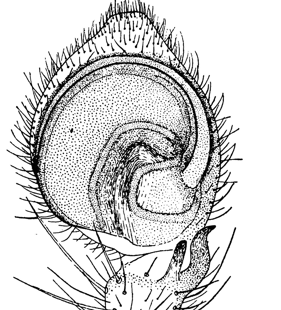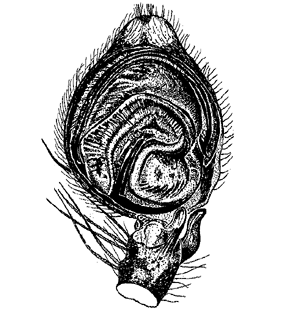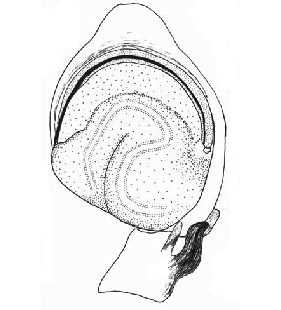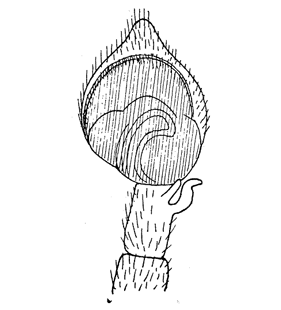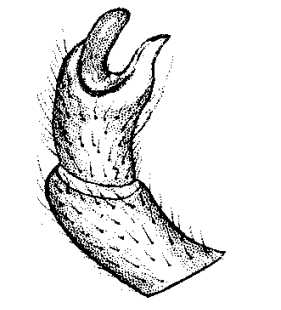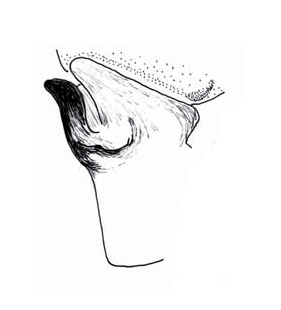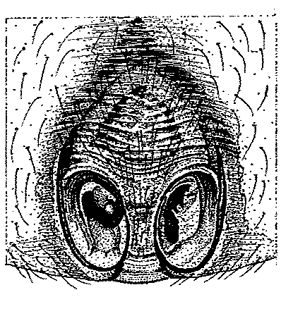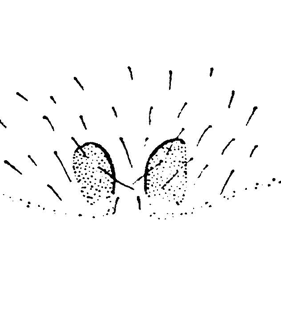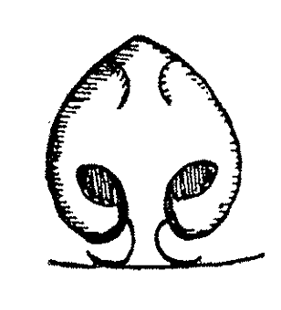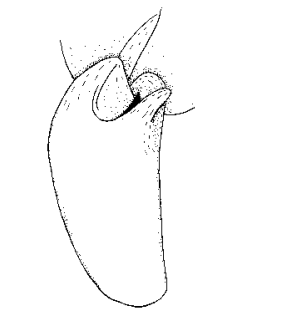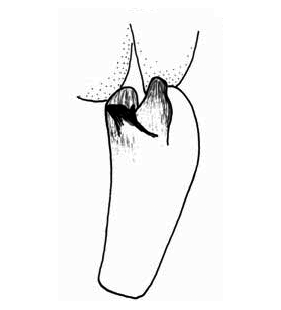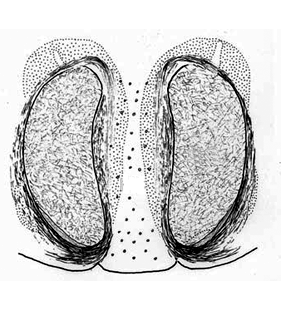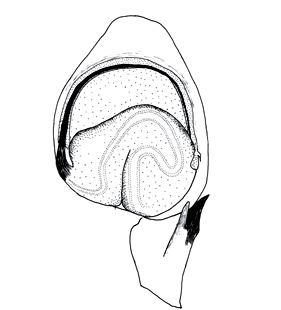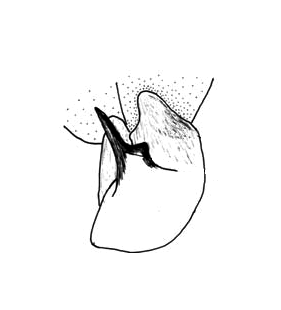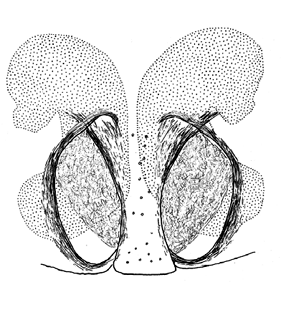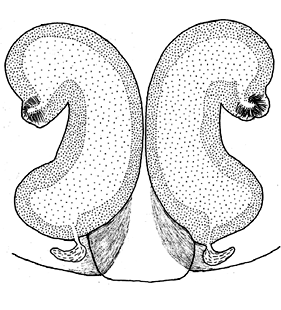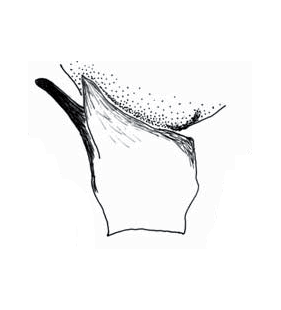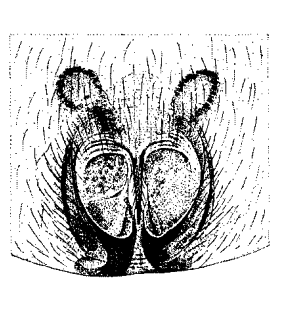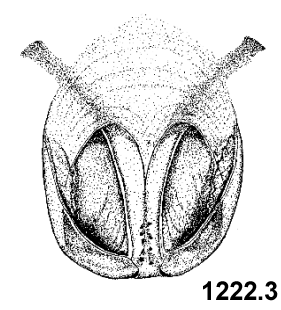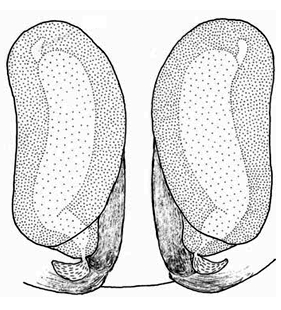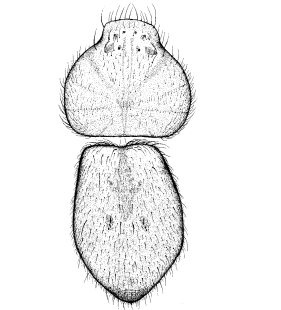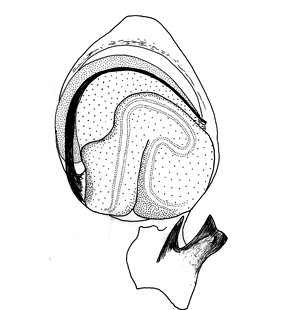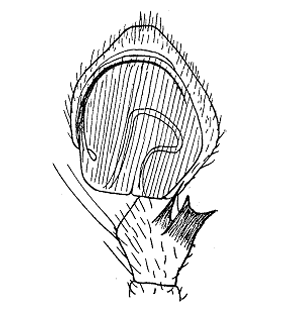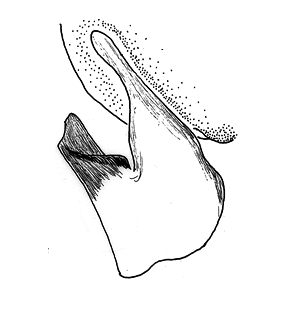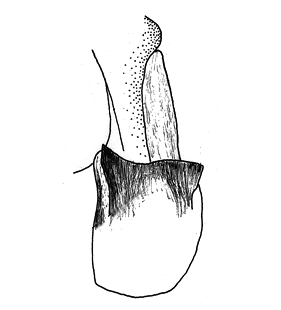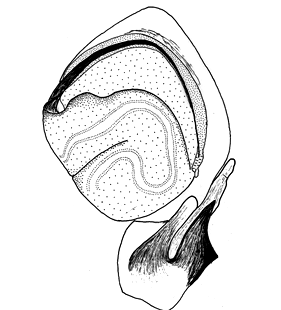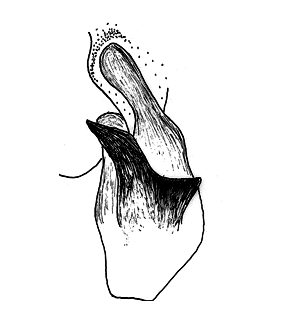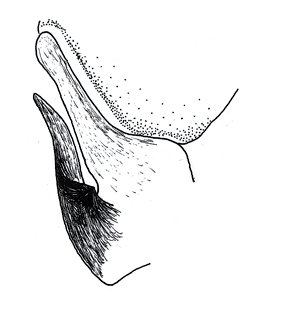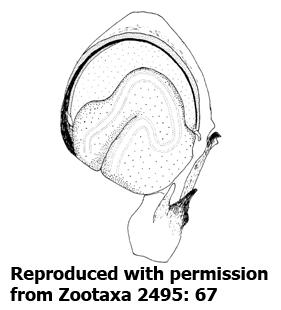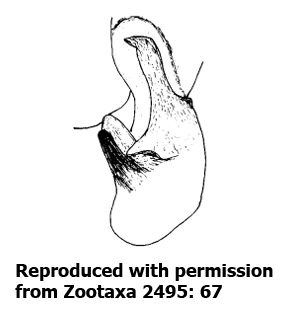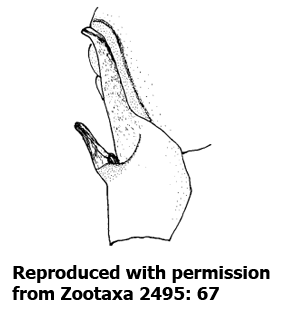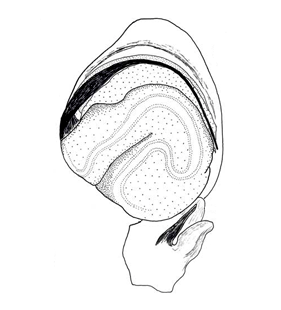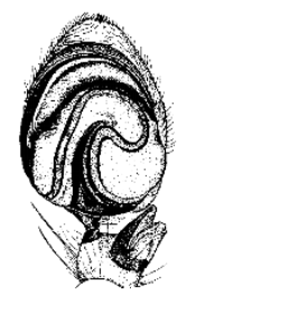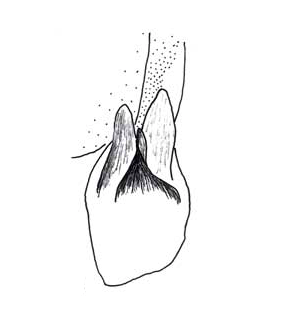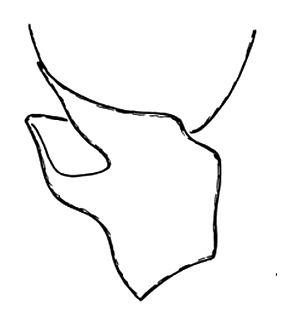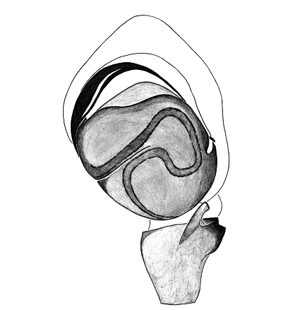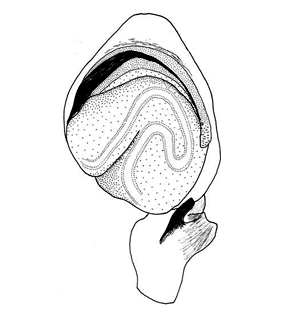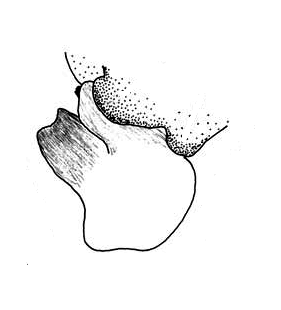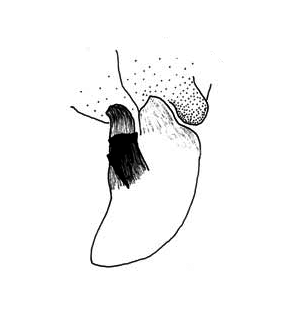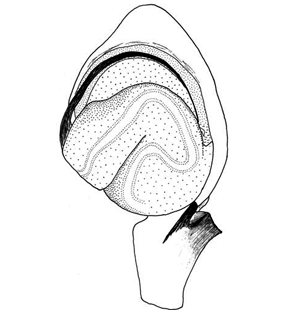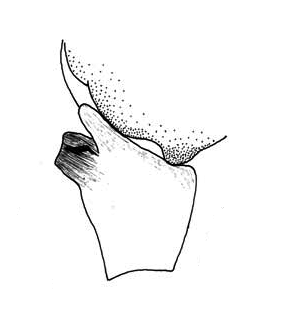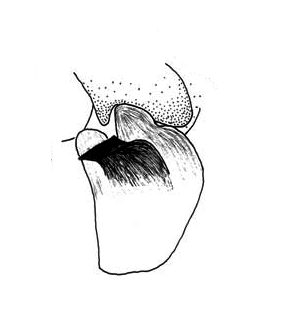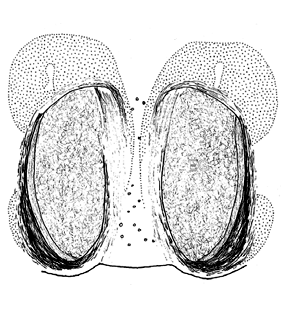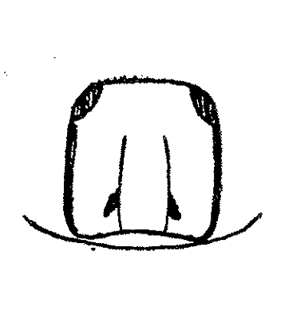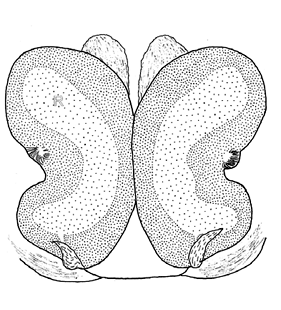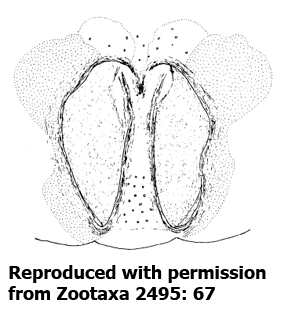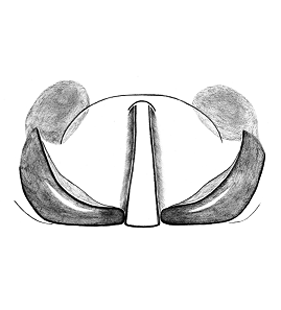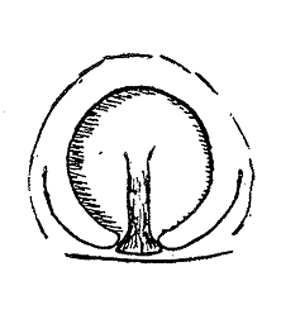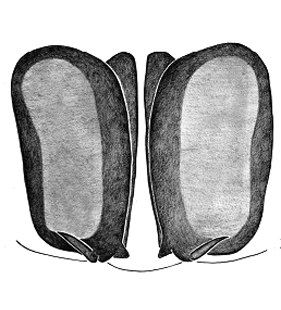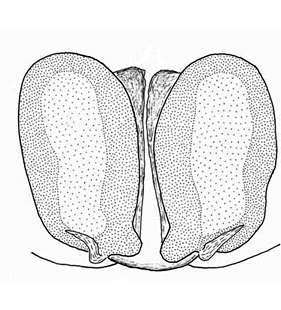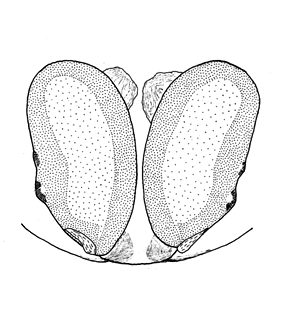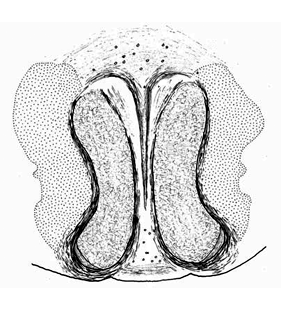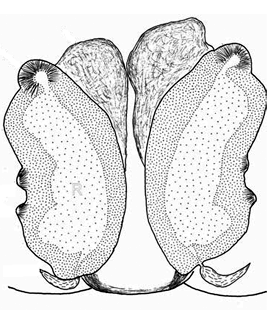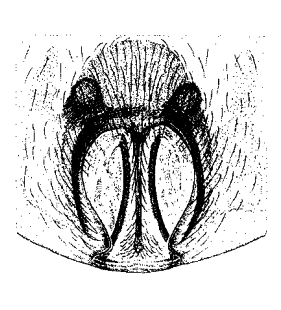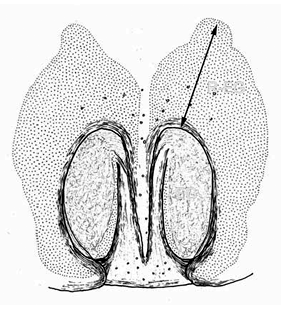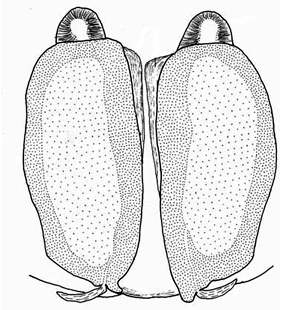Philodromus: margaritatus- and poecilus-groups
|
In case you find an error or have a specific suggestion, please follow this link: click
|
||||||||
| 1 |
Tibia I with 4 pairs of ventral spines (including the apicals), chelicerae with light transversal band Philodromus margaritatus (Clerck, 1757) |
|||||||
| - | Tibia I with 5 or 6 pairs of ventral spines (including apicals), chelicerae without transversal band |
|||||||
| 2 (1) |
Tibia I with 6 pairs of ventral spines (including the apicals) Philodromus laricium Simon, 1875 |
|||||||
| - | Tibia I with 5 pairs of ventral spines (including the apicals) |
|||||||
| 3 (2) |
Colouration uniform: dorsal shield of prosoma reddish-brown, dorsum of opisthosoma grey, legs without distinct annulation |
|||||||
| - | Dorsal shield of prosoma and opisthosoma with colourful pattern, legs with distinct dark spots and annulation |
|||||||
| 4 (3) |
Femora with parallel black stripe at prolateral-ventral side, inner part of conductor large, receptacula embryo-shaped Philodromus femurostriatus Muster, 2009 |
| ||||||
| - | Femora without dark pattern, inner part of conductor of normal size, receptacula bean-shaped Philodromus fuscomarginatus (De Geer, 1778) |
|||||||
| 5 (3) |
Males |
|||||||
| - | Females |
|||||||
| 6 (5) |
Dorsal tibial apophysis strongly elongated |
|||||||
| - | Dorsal tibial apophysis of similar length as other tibial apophyses |
|||||||
| 7 (6) |
Retrolateral tibial apophysis with a broad edge, embolus originating at 7:30 o’clock position Philodromus parietalis Simon, 1875 |
| ||||||
| - | Retrolateral tibial apophysis tapering, embolus originating at > 8 o’clock position |
|||||||
| 8 (7) |
Tip of dorsal tibial apophysis rounded and not bent, embolus originating at 9 o’clock position Philodromus blanckei (Wunderlich, 1995) |
| ||||||
| - | Tip of dorsal tibial apophysis bent to retroventral side, embolus originating at 8:30 o’clock position Philodromus monitae Muster & Van Keer, 2010 |
| ||||||
| 9 (6) |
Retrolateral tibial apophysis with a single rounded tip |
|||||||
| - | Retrolateral tibial apophysis bifid |
|||||||
| 10 (9) |
Tip of cymbium round, sperm duct loop strongly asymmetric Philodromus poecilus (Thorell, 1872) |
| ||||||
| - | Tip of cymbium more pointed, sperm duct loop less strongly asymmetric Philodromus bucaensis (Logunov & Kunt, 2010) |
| ||||||
| 11 (9) |
Embolus irregularly curved with a sharp bend and sudden narrowing at 12 o’clock position, retrolateral tibial apophysis in lateral view tower-shaped Philodromus pinetorum Muster, 2009 |
| ||||||
| - | Embolus evenly curved and narrowing, retrolateral tibial apophysis in lateral view skrew-shaped Philodromus johani Muster, 2009 |
| ||||||
| 12 (5) |
Receptacula kidney-shaped |
|||||||
| - | Receptacula ovoid |
|||||||
| 13 (12) |
Vulva without sclerotized bursa copulatrix Philodromus pentheri Muster, 2009 |
| ||||||
| - | Vulva with sclerotized bursa copulatrix anterior to the receptacula |
|||||||
| 14 (13) |
Width of vulva similar in anterior and posterior half Philodromus parietalis Simon, 1875 |
| ||||||
| - | Receptacula diverging anteriorly, thus vulva much wider in anterior than in posterior half Philodromus monitae Muster & Van Keer, 2010 |
| ||||||
| 15 (12) |
Epigynal grooves small slits along the median septum Philodromus pinetorum Muster, 2009 |
| ||||||
| - | Epigynal grooves extended |
|||||||
| 16 (15) |
Median septum without elevated keel, glandular heads not appreciable Philodromus johani Muster, 2009 |
| ||||||
| - | Median septum with elevated keel, receptacula with glandular heads sitting anteriorly |
|||||||
| 17 (16) |
Lateral margins of epigynal grooves concave, bursa copulatrix voluminous, extending beyond receptacula anteriorly Philodromus blanckei (Wunderlich, 1995) |
| ||||||
| - | Lateral margins of epigynal grooves convex, bursa copulatrix small, between the receptacula Philodromus poecilus (Thorell, 1872) |
|

